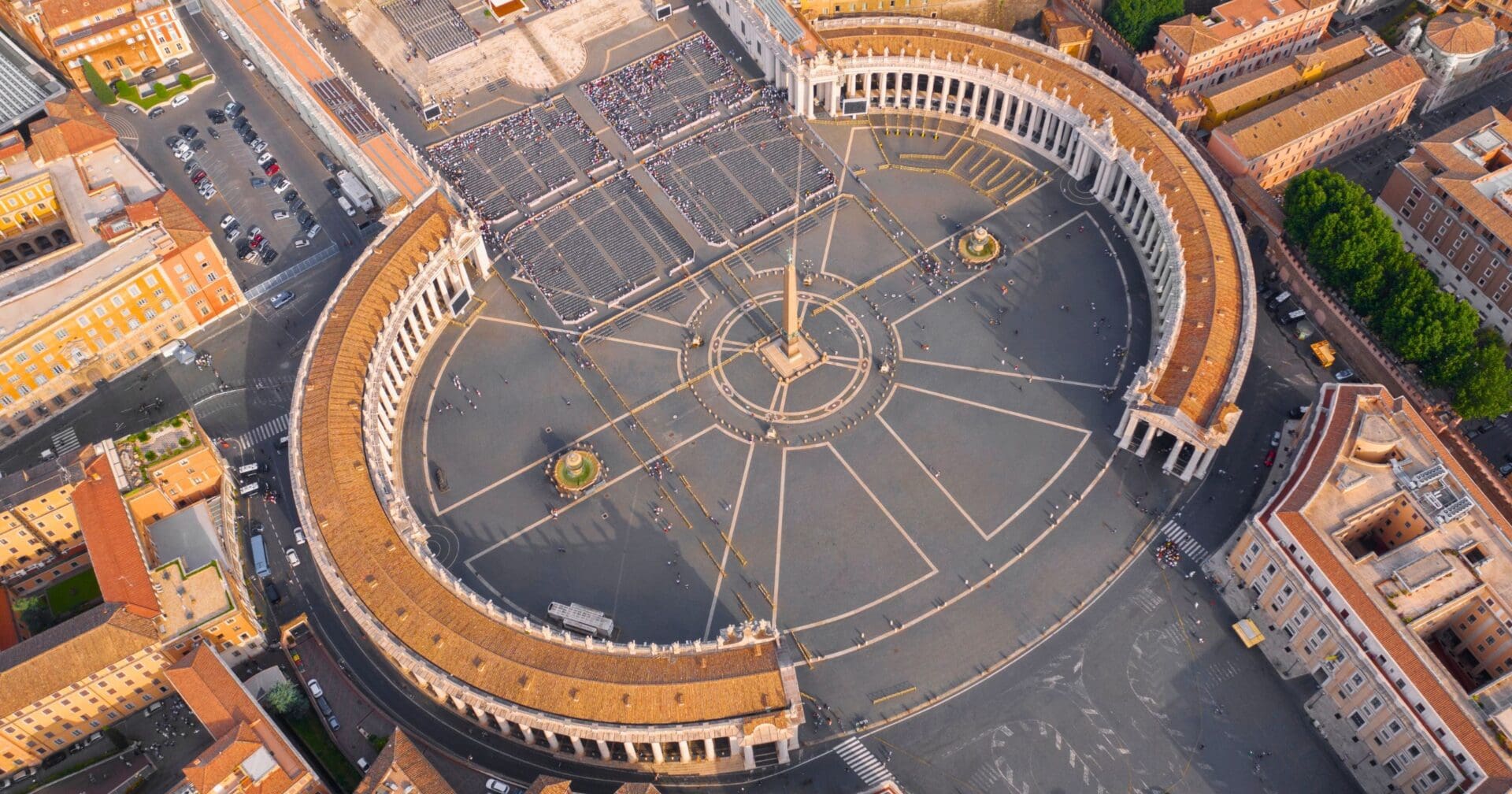Spread throughout Rome are ancient Egyptian obelisks, some towering almost a hundred feet tall. Thirteen obelisks in total dot the city of Rome, having been brought throughout history by Roman Emperors from Egypt, or ordered to be built in place as reproductions of originals from famous Egyptian obelisks.
However, of all the erected Obelisks in Rome, none other is more prominent than the Vaticano in the center of Saint Peter’s Square. Who built it, and why is it in the middle of Saint Peter’s Square?
At the center of Saint Peter’s Square stands an Egyptian obelisk made of red granite without any hieroglyphs or inscriptions. From its base made of ornate bronze lions to the apex of the Cross on its point, its total height is 134 feet tall. The obelisk was originally erected by an unknown pharaoh at Heliopolis, Egypt.
The Roman Emperor Augustus had it dismantled and brought to the Forum of Alexandria where it stood until the year 37. Caligula then ordered it to be demolished and rebuilt in the spina, or center line of the Circus of Nero, the building where the Emperor Nero held his brutal games and public executions of early Catholics. Legend has it that the original metal globe placed atop the obelisk, before being replaced by a cross, contained the ashes of Julius Caesar. (It was later discovered to contain only dust).
The Circus of Nero along with the obelisk became the site where early Catholics were martyred under the great religious persecution by Nero beginning the year 65. Two years later, the Circus would be used in the crucifixion of Saint Peter. Saint Peter requested he crucified upside down, not feeling worthy of dying the same way the Lord had.
Catholic tradition states that the last sight of Saint Peter was the Vaticano obelisk before he died. Saint Peter’s Basilica was built over the Circus of Nero. The illustration below shows the original location of the obelisk, the place where Peter’s cross was, and Peter’s tomb, outside the circus on what was an ancient Roman road known as the Via Cornelia. Note that Saint Peter’s tomb is now directly beneath the high altar of the Basilica.
The Vaticano remained in place for nearly one and a half millennia until the year 1586, when Pope Sixtus V had it moved to its current location in the center of Saint Peter’s square during the construction of the new Saint Peter’s Basilica. Today, all who make pilgrimage the Vatican are sure to see the iconic obelisk standing tall.
Photo credit: Stefano Tammaro / Shutterstock.com

















